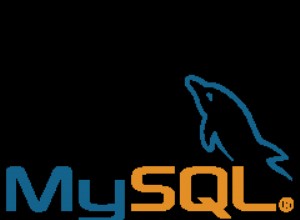क्या सरणियाँ आपके लिए अच्छी हैं? (SQL Fiddle)
select
id,
sum(totalcol) as total,
array_agg(somecol) as somecol,
array_agg(totalcol) as totalcol
from (
select id, somecol, count(*) as totalcol
from mytable
group by id, somecol
) s
group by id
;
id | total | somecol | totalcol
----+-------+---------+----------
1 | 6 | {b,a,c} | {2,1,3}
2 | 5 | {d,f} | {2,3}
9.2 में JSON ऑब्जेक्ट्स का एक सेट होना संभव है (Fiddle)
select row_to_json(s)
from (
select
id,
sum(totalcol) as total,
array_agg(somecol) as somecol,
array_agg(totalcol) as totalcol
from (
select id, somecol, count(*) as totalcol
from mytable
group by id, somecol
) s
group by id
) s
;
row_to_json
---------------------------------------------------------------
{"id":1,"total":6,"somecol":["b","a","c"],"totalcol":[2,1,3]}
{"id":2,"total":5,"somecol":["d","f"],"totalcol":[2,3]}
9.3 में, lateral . को जोड़ने के साथ , एक एकल वस्तु (Fiddle)
select to_json(format('{%s}', (string_agg(j, ','))))
from (
select format('%s:%s', to_json(id), to_json(c)) as j
from
(
select
id,
sum(totalcol) as total_sum,
array_agg(somecol) as somecol_array,
array_agg(totalcol) as totalcol_array
from (
select id, somecol, count(*) as totalcol
from mytable
group by id, somecol
) s
group by id
) s
cross join lateral
(
select
total_sum as total,
somecol_array as somecol,
totalcol_array as totalcol
) c
) s
;
to_json
---------------------------------------------------------------------------------------------------------------------------------------
"{1:{\"total\":6,\"somecol\":[\"b\",\"a\",\"c\"],\"totalcol\":[2,1,3]},2:{\"total\":5,\"somecol\":[\"d\",\"f\"],\"totalcol\":[2,3]}}"
9.2 में lateral के बजाय उपश्रेणियों का उपयोग करके एकल वस्तु को अधिक जटिल तरीके से रखना भी संभव है




